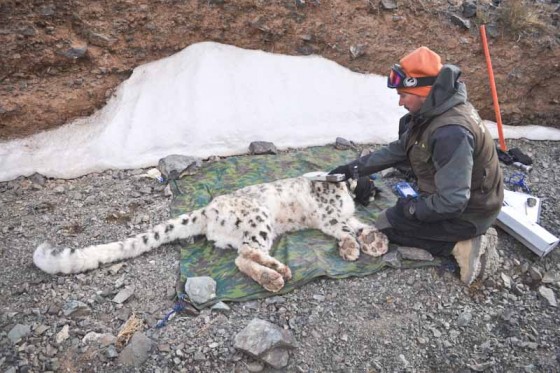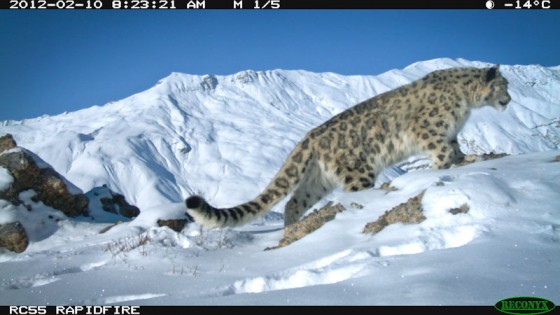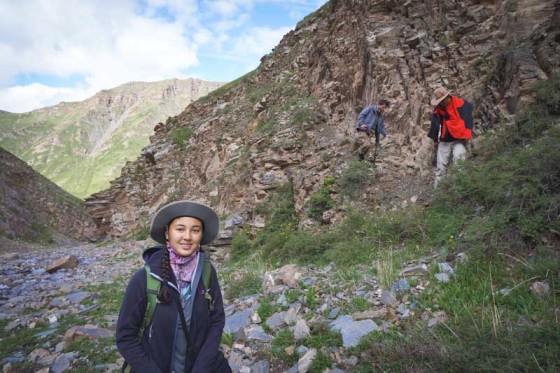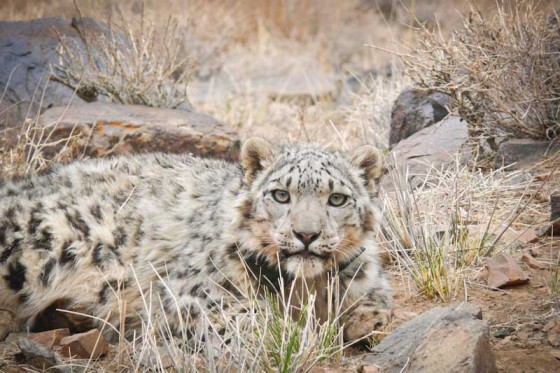Four decades on, a new generation of Seattleites continues efforts to protect Central Asia’s snow leopards.
Seattle’s love affair with the snow leopard started back in the 1972, when a pair of two-year-old animals from Kazakhstan made their debut at the Woodland Park Zoo.
Our city has a rich background in conservation efforts for endangered species, and despite our geographic distance from the Central Asian habitat of these large cats, they continue to be a huge hit.
And why not? Snow Leopards rival international conservation poster-species like the giant panda for cuteness and character — and for the peril they face. The playful cubs, whose colors range from dusty dark grey to yellowish tan, are enough to make any casual zoo visitor swoon.
Seattle’s effort to protect the endangered snow leopard all started with Helen Freeman, who worked as Education Curator at Woodland Park when the first animals arrived in the seventies, and was inspired to save the species at an international level.
In 1981 she formed the Snow Leopard Trust, a community-based conservation organization that takes a three-pronged approach that emphasizes understanding snow leopard behavior and habitat, listening to the human community that shares their habitat to identify needs, and seeking resources for sustaining long-term programs.
Snow leopard cubs Asha and Shanti, born in May 2012 at the Woodland Park Zoo.
Freeman passed away a few years ago, but current Executive Director Brad Rutherford cites her persistence as the predominant reason that fondness for the grand cat has grown to be so strong in the Pacific Northwest.
The Trust is focused on the five countries where the majority of snow leopards live: China, India, Pakistan, Mongolia and Kyrgyzstan.
Estimates of the species’ population in the wild range from 3,500 to 7,000 — it’s difficult to track the animals across the remote, mountainous terrain to get an accurate count. The biggest threat to their survival is human hunting.
Rutherford says his visits to Central Asia consist mostly of drinking a lot of tea and listening. Through speaking with the locals, the Trust learned the greatest hazard to livestock is actually disease, but since it’s easier to put out poisons for cats that occasionally hunt the livestock, the snow leopards can become a convenient scapegoat.
When a family has two goats and a leopard eats one of them, Rutherford says, they’re sure to choose their survival over sparing an endangered animal.
 Orjan Johansson of the Snow Leopard Trust puts a GPS collar on a sedated animal in Mongolia. (Photo courtesy Snow Leopard Trust)
Orjan Johansson of the Snow Leopard Trust puts a GPS collar on a sedated animal in Mongolia. (Photo courtesy Snow Leopard Trust)
Fortunately, many of the most common livestock ailments are treatable, Rutherford explains, so the Trust started providing funds to help with those treatments, while educating the communities that snow leopards might be common where they live, but actually endangered.
Rutherford says the Trust has worked hard to change the relationship of locals with leopards over time. There are no easy fixes, but when the organization goes into a community, he says they stay for the long-term. They have over 40 staff in the countries where they work, all of whom are local people.
Rutherford shares an example of the Trust’s work in Mongolia, where it buys the wool from their livestock at an above-market rate if the families sign a pledge not to kill any snow leopards.
He tells the story of a visit he made to Mongolia, when he was invited into the home of a semi-nomadic family involved in the program.
“The pride of the family for what they were doing, and the connection they saw between themselves, snow leopards and the economy,” he recalls, “…talk about recharging your batteries, to see the program really working, seeing the evolution, is amazing.”
 A leopard triggers a camera trap in the mountains near Spiti, India.(Photo by Rishi Sharma)
A leopard triggers a camera trap in the mountains near Spiti, India.(Photo by Rishi Sharma)
Next door in China, there’s a big overlap between monastery lands and snow leopard habitat. Monasteries can have a great deal of sway on community behaviors, especially in rural areas on community behaviors, so the Trust is effectively involving monks in education and research.
“There was a huge festival with 10,000 people and the Lama raised his hands and got people to raise their hands and pledge not to kill snow leopards,” Rutherford said. “We’re not foolish enough to think this will change everything but it’s better than not having it.”
Monks are involved with placing and tracking research cameras, especially in areas that are hard to get to. With high quality photos of a community of cats, it’s possible to tell them apart from one another by their spot patterns and keep track of their behavior.
Just as a new generation of snow leopards were born at the Woodland Park Zoo in 2012, a new generation of animal lovers are joining in to help with the Trust’s work.
Alexia Fite, a junior at Garfield High School, raised funds to travel to China and Tibet with the Trust last summer to assist researchers in the field. She says she grew up with a love for snow leopards due to her grandmother’s involvement in the Trust.
 Garfield High School student Alexia Fite tracking leopards in Tibet with the Trust last summer. (Photo courtesy Alexia Fite)
Garfield High School student Alexia Fite tracking leopards in Tibet with the Trust last summer. (Photo courtesy Alexia Fite)
Fite says she found herself in awe of the vast landscapes and the stark contrast between the lifestyles of townspeople and rural herders.
“I came away from the experience wanting to share what it was like and on why there needs to be a lot more education,” she said. She plans to start a high school group to support the cause.
You can catch Fite and Rutherford and talk animal conservation on Friday, January 10th at the China Club of Seattle event “Can China Save the Snow Leopard.” For more info visit: chinaclubseattle.org


